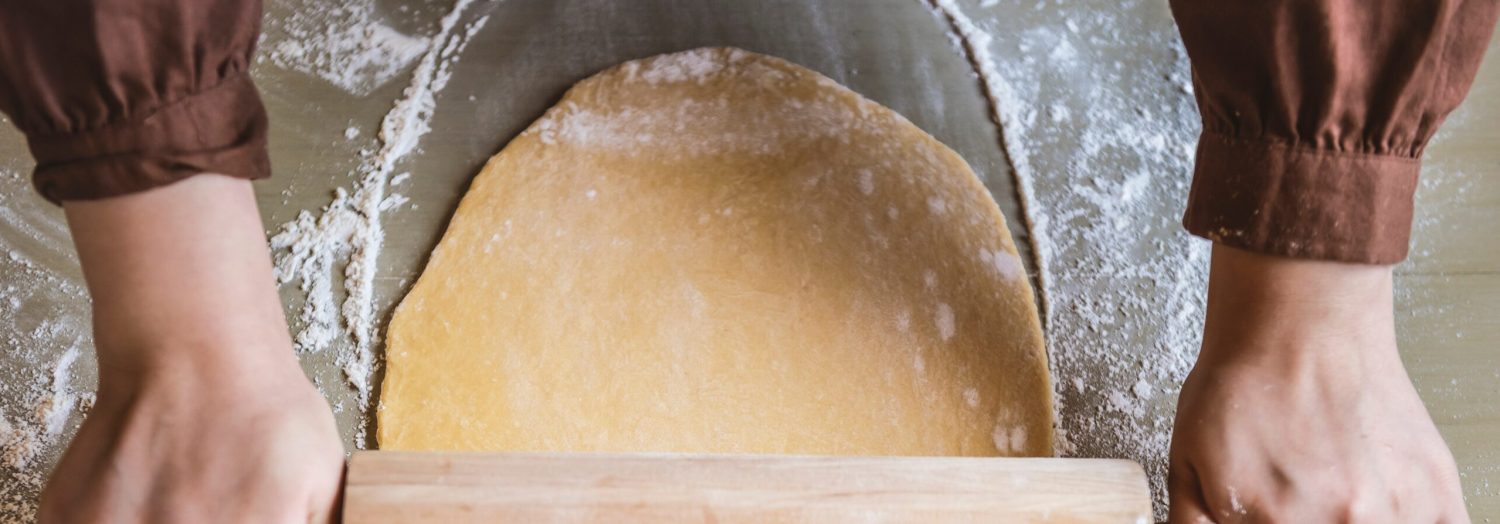Creating French baguettes at home is a rewarding experience that brings the taste of France right to your kitchen. With a crispy crust and a soft, airy interior, these baguettes are perfect for any meal, whether it's breakfast, lunch, or dinner. Follow this simple recipe to achieve bakery-quality results.
The ingredients for this recipe are quite straightforward, but it's important to note that instant yeast might not be a staple in every household. Make sure to pick up a fresh packet from the supermarket. Additionally, using all-purpose flour is crucial for the right texture, so avoid substituting with other types of flour.

Ingredients For French Baguettes Recipe
All-purpose flour: This is the base of your dough, providing the necessary structure and texture for the baguettes.
Salt: Enhances the flavor of the baguettes and helps control the fermentation process.
Instant yeast: This leavening agent helps the dough rise quickly and efficiently, giving the baguettes their airy texture.
Lukewarm water: Activates the yeast and helps to form the dough, ensuring it is the right consistency for kneading.
Technique Tip for Perfect Baguettes
When shaping the baguettes, ensure you create a tight surface tension by gently stretching and folding the dough over itself. This helps the bread achieve a better rise and a more defined crust. Additionally, make a few diagonal slashes on the top of each baguette with a sharp knife or a lame before baking. This allows the steam to escape and gives the baguettes their characteristic appearance.
Suggested Side Dishes
Alternative Ingredients
all-purpose flour - Substitute with bread flour: Bread flour has a higher protein content, which can result in a chewier texture, similar to traditional baguettes.
all-purpose flour - Substitute with whole wheat flour: Whole wheat flour adds a nutty flavor and more nutrients, though it may make the baguette denser.
salt - Substitute with kosher salt: Kosher salt has a coarser grain and a purer flavor, which can enhance the taste of the baguette.
salt - Substitute with sea salt: Sea salt can add a more complex flavor profile due to its mineral content.
instant yeast - Substitute with active dry yeast: Active dry yeast can be used if dissolved in water first, though it may take longer to rise.
instant yeast - Substitute with fresh yeast: Fresh yeast can provide a more robust flavor but needs to be activated in lukewarm water before use.
lukewarm water - Substitute with milk: Milk can add a richer flavor and softer texture to the baguette.
lukewarm water - Substitute with beer: Beer can add a unique flavor and help with the leavening process due to its yeast content.
Alternative Recipes Similar to Baguettes
How to Store or Freeze Your Baguettes
Allow the baguettes to cool completely at room temperature before storing or freezing. This prevents condensation, which can make the bread soggy.
For short-term storage, wrap the baguettes in a clean, dry kitchen towel. Place them in a bread box or a paper bag to maintain their crisp crust for up to two days.
If you need to store the baguettes for a longer period, consider freezing them. Wrap each baguette tightly in aluminum foil or plastic wrap to protect them from freezer burn.
Place the wrapped baguettes in a resealable plastic freezer bag. Squeeze out as much air as possible before sealing to prevent ice crystals from forming.
Label the freezer bag with the date to keep track of freshness. Baguettes can be frozen for up to three months without significant loss of quality.
When ready to enjoy, thaw the baguettes at room temperature for a few hours or overnight. For a quicker option, you can use the defrost setting on your microwave, but be cautious to avoid overdoing it.
To restore the baguettes' crispy crust after thawing, preheat your oven to 180°C (350°F). Place the baguettes directly on the oven rack and bake for 5-10 minutes until they are warm and crusty.
If you have leftover baguettes that have gone slightly stale, consider repurposing them. Slice and toast them to make croutons for soups and salads, or grind them into breadcrumbs for various recipes.
For a delightful twist, you can also make French toast or bread pudding using slightly stale baguettes. The texture of the bread will soak up the custard mixture beautifully, resulting in a delicious treat.
How to Reheat Leftovers
Oven Method: Preheat your oven to 180°C (350°F). Lightly spritz the baguette with water to add moisture. Wrap it in aluminum foil and place it directly on the oven rack. Heat for about 10-15 minutes until the bread is warm and the crust is crispy.
Toaster Oven Method: Preheat your toaster oven to 180°C (350°F). Slice the baguette if it’s too large to fit. Lightly spritz with water and place directly on the rack or a baking tray. Heat for 5-10 minutes until warm and crispy.
Stovetop Method: Heat a non-stick skillet over medium heat. Lightly spritz the baguette with water. Place the bread in the skillet and cover with a lid. Heat for 5-7 minutes, flipping halfway through, until the baguette is warm and the crust is crispy.
Microwave Method: This method is quick but may result in a softer crust. Wrap the baguette in a damp paper towel and place it on a microwave-safe plate. Heat on medium power for 30-60 seconds, checking frequently to avoid over-softening.
Steam Method: Boil a small amount of water in a pot and place a steaming basket over it. Wrap the baguette in a clean, damp kitchen towel and place it in the basket. Cover and steam for about 5 minutes. This method helps retain moisture and revives the bread without making it too hard.
Essential Tools for Baking Baguettes
Mixing bowl: A large bowl used to combine the flour, salt, and yeast, and to mix in the water to form the dough.
Measuring cups: Used to measure the flour and water accurately.
Measuring spoons: Used to measure the salt and yeast precisely.
Wooden spoon: Useful for mixing the ingredients together before kneading.
Kitchen scale: Ensures precise measurement of ingredients, especially the flour.
Clean surface: A flat, clean area for kneading the dough.
Dough scraper: Helps in handling and shaping the dough, and cleaning the work surface.
Plastic wrap: Used to cover the dough while it rises to prevent it from drying out.
Kitchen towel: Can also be used to cover the dough during rising.
Baking sheet: A flat sheet on which the shaped baguettes are placed for baking.
Parchment paper: Lined on the baking sheet to prevent the baguettes from sticking.
Oven: Preheated to the required temperature for baking the baguettes.
Cooling rack: Allows the baked baguettes to cool evenly after baking.
How to Save Time on Making Baguettes
Pre-measure ingredients: Measure out flour, salt, and yeast in advance to streamline the process.
Use a stand mixer: Utilize a stand mixer with a dough hook to knead the dough efficiently.
Warm environment: Let the dough rise in a slightly warm oven to speed up the rising process.
Shape in advance: Shape the baguettes while the oven preheats to save time.
Batch baking: Double the recipe and freeze extra baguettes for future use.

French Baguettes Recipe
Ingredients
Main Ingredients
- 500 g all-purpose flour
- 10 g salt
- 7 g instant yeast
- 350 ml water lukewarm
Instructions
- 1. In a mixing bowl, combine flour, salt, and yeast.
- 2. Gradually add lukewarm water and mix until a dough forms.
- 3. Knead the dough for about 10 minutes until smooth.
- 4. Let the dough rise for 1 hour or until doubled in size.
- 5. Preheat the oven to 220°C (430°F).
- 6. Shape the dough into baguettes and place on a baking sheet.
- 7. Bake for 20-25 minutes until golden brown.
Nutritional Value
Keywords
More Amazing Recipes to Try 🙂
- Italian Anise Bread Recipe50 Minutes
- Pan de Sal Filipino Bread Rolls Recipe35 Minutes
- Banana Coconut Loaf Recipe1 Hours 15 Minutes
- Sabaayad Somali Flatbread Recipe35 Minutes
- Zucchini Plum Bread Recipe1 Hours 15 Minutes
- Spicy Fennel Bread Recipe50 Minutes
- Oatmeal Banana Nut Bread Recipe1 Hours 15 Minutes
- Candied Fruit Bread Recipe1 Hours 5 Minutes

Leave a Reply